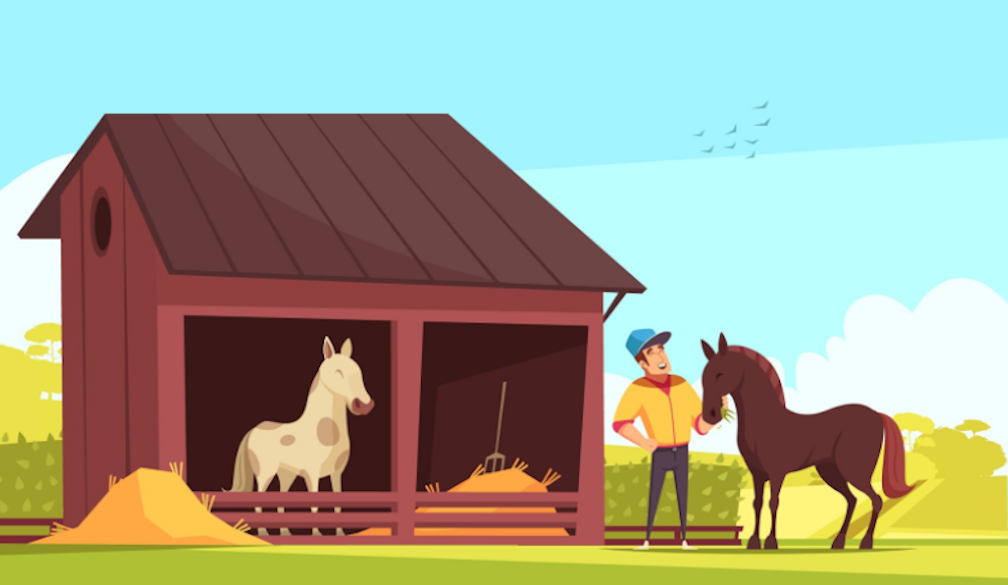Building Equine Stables? Here’s What Every Horse Owner Needs to Know

(Source)
Most horse owners pursue their dream of owning a horse stable on their land because it offers proximity and emotional connection. Hearing horses in the paddock early in the morning is a fulfilling experience since it means your horses remain secure and content just a few steps from home.
Developing equine facilities requires substantial consideration from owners. The right stable design allows you to build an area that nurtures animal wellness and simplifies your daily tasks while enhancing the smart functionality of your estate.
The following guide presents essential information to help you make proper decisions when building equine stables, starting from foundation to end.
1. Start with the Horse, Not the Hammer
You might get wrapped up in looks and layouts, but remember — your horse will live here. Their natural behaviours, habits, and comfort should guide every design choice.
Ask yourself:
- Does my horse spend most of their time inside or outside?
- Do they like to be around other horses, or do they want their own space?
- Do they have any health problems we need to think about (e.g., breathing or joint issues)?
Good horse stables respect these differences. A stabled competition horse will need different things than an old pony or a young foal.
2. Airflow Is Key
Bad air circulation can be a hidden problem. Dust, ammonia from pee, and mould spores can build up quickly in a stuffy stable, causing breathing problems like heaves (like asthma in horses).
Natural ventilation is your best buddy. Think tall ceilings, ridge vents, louvre windows, and open barn doors (with fly screens if needed). Don't seal the stable, either—fresh air is more important than warmth.
Tip: Place stables where they can catch the main breezes, and consider adding ceiling fans or mechanical vents if there's not much airflow.
3. The Importance of Stable Size
While there's no universal solution, experts often suggest a minimum of 12ft x 12ft for a typical horse. Bigger breeds like warmbloods or Clydesdales might need extra space to move around and rest.
You may get by with less room for ponies or foals, but giving more space is always better. Ample room equals freedom, and tight stables can cause stress or harm.
Remember the ceiling height—shoot for at least 9 feet to lower the chance of head injuries and boost airflow.
4. Flooring: Consider Hooves, Not Just Cleaning
Concrete floors look practical, but they're tough on hooves and joints. Many horse owners now choose:
- Rubber matting: Offers padding, insulation, and traction
- Clay or crushed stone: Natural, allows drainage and feels softer
- Drainage channels: Stop water from pooling and help with cleaning
- Rubber mats have gained popularity in today's horse barns. They offer comfort and help cut down on bedding expenses. Just remember to ensure the surface below is flat and allows for drainage.
5. Safe, Solid Materials
Your horse will put those walls to the test through biting, striking, rubbing, and crib-biting — whether you want it to or not.
Pick durable, safe materials for inside walls, doors, and fixtures. Classic hardwoods stand firm, while metal grates (without sharp edges) let air flow and horses socialise.
Ensure door catches can outsmart horses (they're intelligent animals) and steer clear of anything that might snag a hoof or halter.
6. Layout Makes All the Difference
An innovative, stable yard design saves time, lowers stress, and reduces wheelbarrow trips.
Key features of a well-planned layout:
- Stables are set around a central yard for easy watching.
- Tack room, feed storage, and wash area close by
- Sheltered walkways for use in any weather
- One-way traffic design (enter one side, exit the other) to avoid jams
- Horse stables should help, not hinder, your work—the more user-friendly your design, the smoother your daily tasks.
7. Sunlight Changes Everything
Good light relaxes horses, stops mould and germs from growing, and helps regulate their sleep patterns.
To let sunlight in, use skylights, see-through roof panels, or big doors and windows. For fake light, choose LEDs with protective covers and put switches where animals can't chew on them.
Extra perk: you'll reduce your power bill and lower the chance of fires.
- Natural Light is a Game-Changer
Good lights calm horses, reduce mould and micro-organism growth and regulate the day-night rhythm.
For daylight, use skylights, translucent roofing sheets, or extensive doors and windows. For synthetic lights, choose LED lighting fixtures with protective covers and make certain switches are out of reach.
Bonus: you'll spend less on strength and reduce heart hazard.
8. Plan for the Future
Building equine stables isn't something you'll want to do twice. So, even if you most effectively have one or two horses now, plan for what the subsequent 5–10 years may carry.
Leave area for added stalls, float parking, a quarantine solid, or a foaling container. It's far less complicated to add now than to redo the whole lot later.
Wrapping Up: It's About Heart, Not Just Hardware
Building equine stables is considered one of the most significant commitments a horse proprietor could make — and also one of the most worthwhile. When completed properly, it becomes more than just a refuge; it's a space where belief is built, exercises are stored, and fitness is maintained.
Whether you're sketching your first format or working with a fashion designer, you should always ask yourself: Does this area make lifestyles better for my horse and less difficult for me?
If the answer's yes, you're already midway there.







